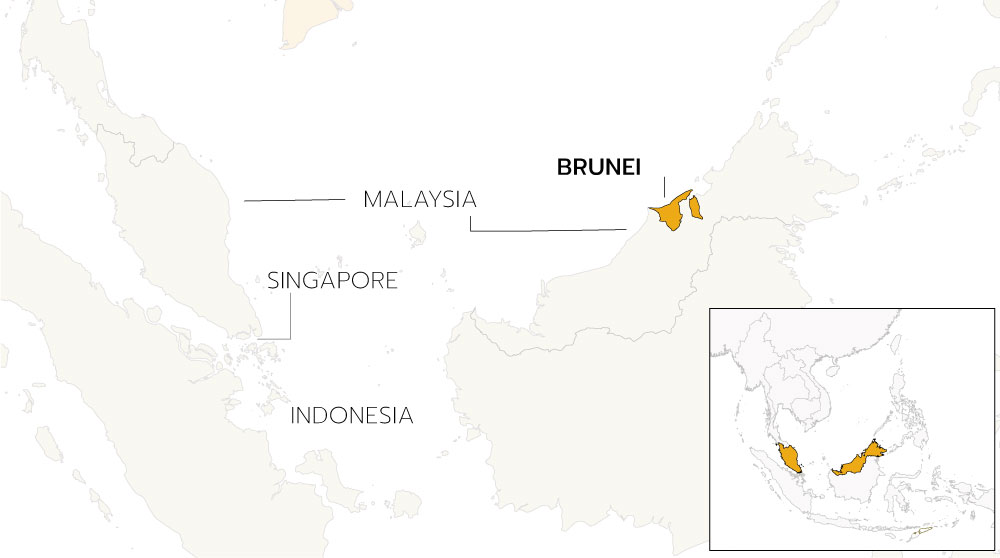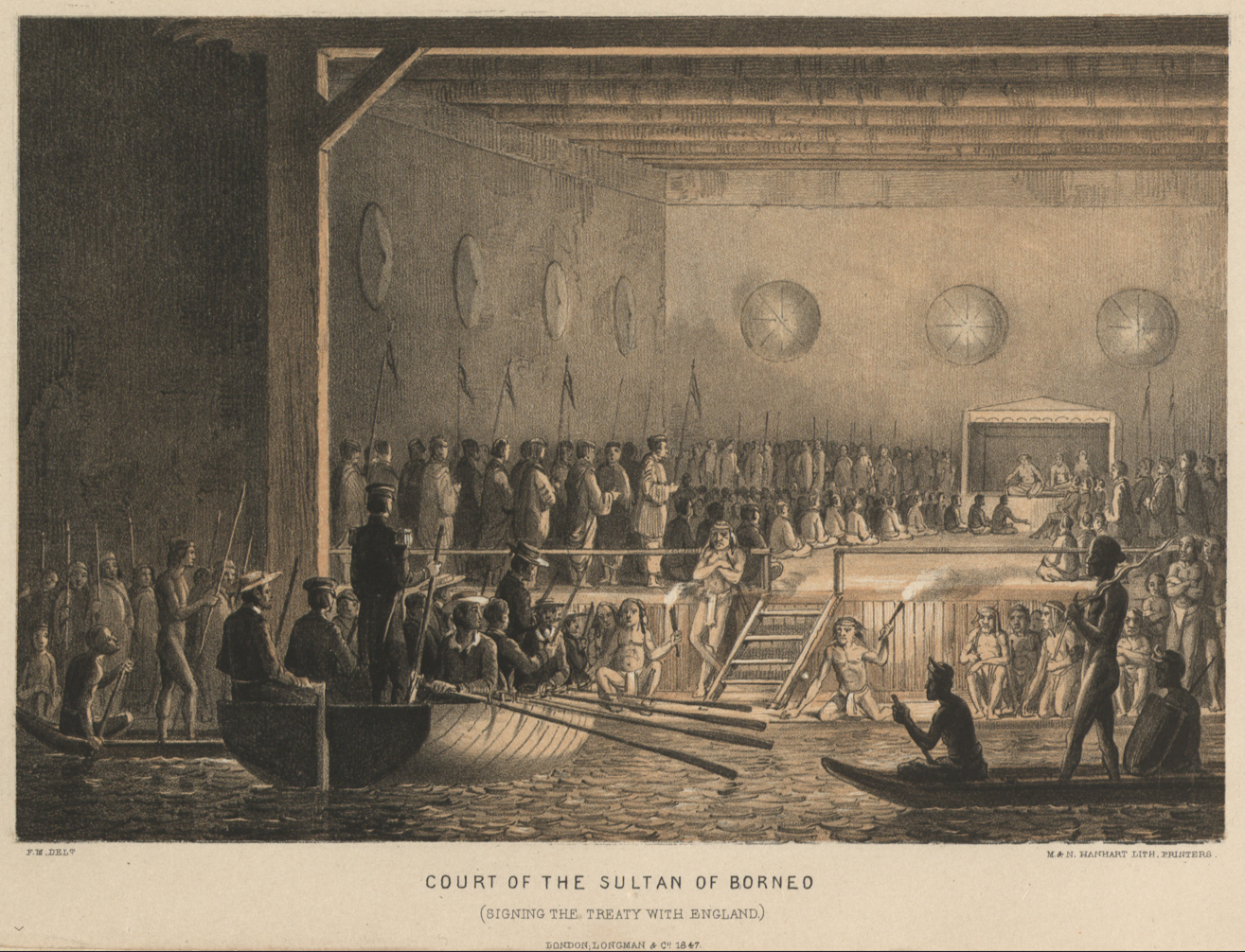Brunei
- 15th century— Islamic sultanate of Brunei nominally in control of Borneo, including Sabah and Sarawak states of Malaysia, and some parts of the Sulu islands in the Philippines.
- 1841 — Sultan of Brunei Omar Ali Saifuddin II rewards British army officer James Brooke for helping to quell a civil war by granting him control of Sarawak.
- 1888 —- Brunei becomes a British protectorate.
- 1906 —Brunei administered by a British resident, with the sultan having nominal authority.
- 1950 -Omar Ali Saifuddin III inaugurated sultan
- 1957 - Plans to set up the first Brunei Broadcasting Station
- 1959 - Sultan Omar introduces Brunei's first written constitution which enshrines Islam as the state religion and keeps Britain in charge of defence and foreign affairs.
- 1963 - Brunei decides to remain a British dependency rather than join the Federation of Malaysia.
- 1967 -Hassanal Bolkiah becomes sultan following the abdication of his father, Sultan Omar, who nonetheless remains chief adviser.
- 1984 - Brunei becomes independent and is inducted as the 49th member of the British Commonwealth


Broadcasts in Brunei by John Lent
Brunei, a British protectorate since 1888, occupies 2,226 square miles, divided into four districts, within the boundary of Sarawak, East Malaysia. Its 145,000 people are mainly Malay (65%) and Chinese (23%), who have, after Japan, the second highest income per capita in Asia.
Most of the money comes from Brunei's rich oil deposits. The nation does not have a daily newspaper, although there is a government radio station. Brunei Broadcasting Service (BBS) operates a network with medium-wave transmitters at Tutong (10 and 20 kw.), Berakas (10 kw.), South W. Lichty and Kuala Belait (0.6 kw.).
On 2 January 1957, the Straits Times announces that Brunei was to have its first through a contract with Marconi's Wireless Telegraph Company. The scheme provided for the buildling of a modern broadcasting house in Brunei Town, a trasmitting station at Tutong and an additional small studio at Seria. A receicing station was also planned where relays of the BBC's Overseas service news bulletins from London in Malay, Chinese and English would be broadcasted. Special serials were also to be used for the reception of the BBC and Australian broadcasts and those of "less distant stations such as Radio Malaya, Radio Saba and Radio Sarawak." The receiving station was to occupy a land area of 15 acres. (The Straits Times, 2 January 1957, p,10) By February of 1962, the government expands their broadcasting capabilities by installing a 10 KW transmitter to beam shortwave signals much like the capacity of North Borneo and Kuching (The Singapore Free Press, 23 February 1962, Page 2)
BBS broadcasts mainly in Bahasa Malaysia (13 hours daily), English (½ hour), Chinese (5 hours), and Churkhali (1 hour). Of Radio hours of weekly programs, over 80% are of national origin, the Brunei's categories 180 being light entertainment and news and information (UNESCO 1975, main p. 261).
The number of radio receivers is 22,000. No receiver license fee is required, and low-cost receivers are made available by the government on easy terms for poor families. A major phenomenon is that Brunei, in March 1975, started color-television transmissions, using the most modern equipment in the area and doing it quite rapidly - the whole operation was designed and built in less than seven months. Ironically, the best equipment will be catering to the smallest television audience Asia; only 5,000 receivers are expected to be sold in the first two years.
In 1975, there were 5,000 registered owners of black and white receivers who picked up less adequate reception from neighbouring Sabah, The equipment for the transmitter is British. ALso , only British-made colour TV have been approved for import into Brunei.
Read More
Malaysia
Indonesia
Singapore
Myanmar
Hong Kong
Vietnam
Thailand
Cambodia
The Philippines
Brunei
Laos
Timor-Leste
